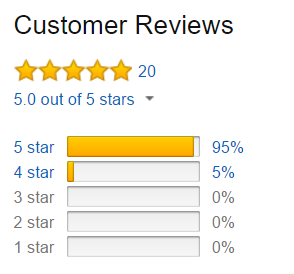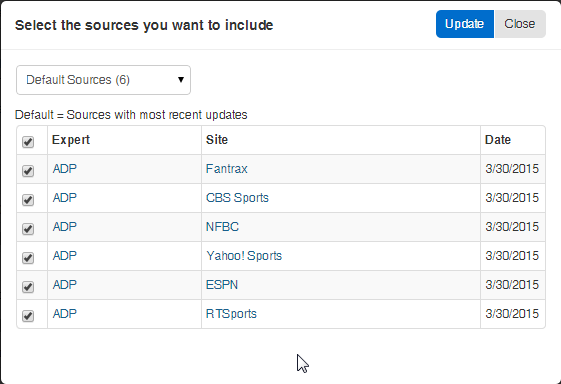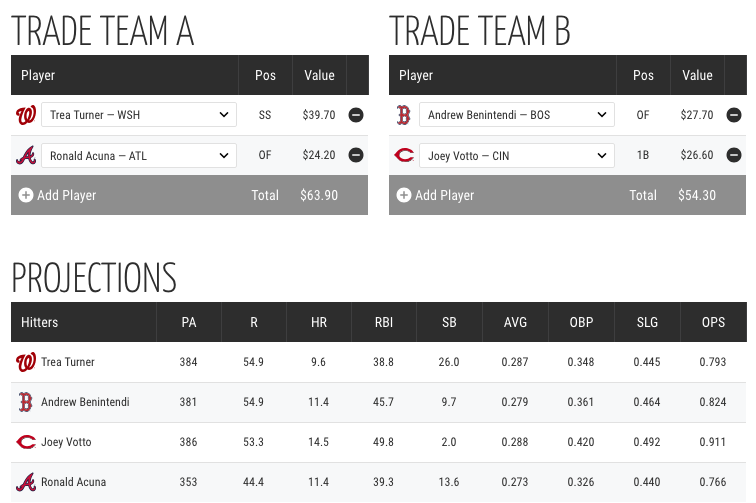Jump To a Specific Area: Books | Free Tools | Premium Tools | Podcasts
The following books, websites, podcasts, and tools all earn the SFBB stamp of approval. Please note that some of the links below are affiliate links but there’s not a product listed below that I don’t use myself. (What’s an affiliate link?)
Books
I’m a believer that books are one of the best resources to building your fantasy baseball knowledge and developing skills and tactics you can use for years into the future. There’s a lot of great content online, but it’s mostly focused in the short-term.
I have personally read and recommend each of these books (I wrote three of them!).
| Title | Description |
|---|---|
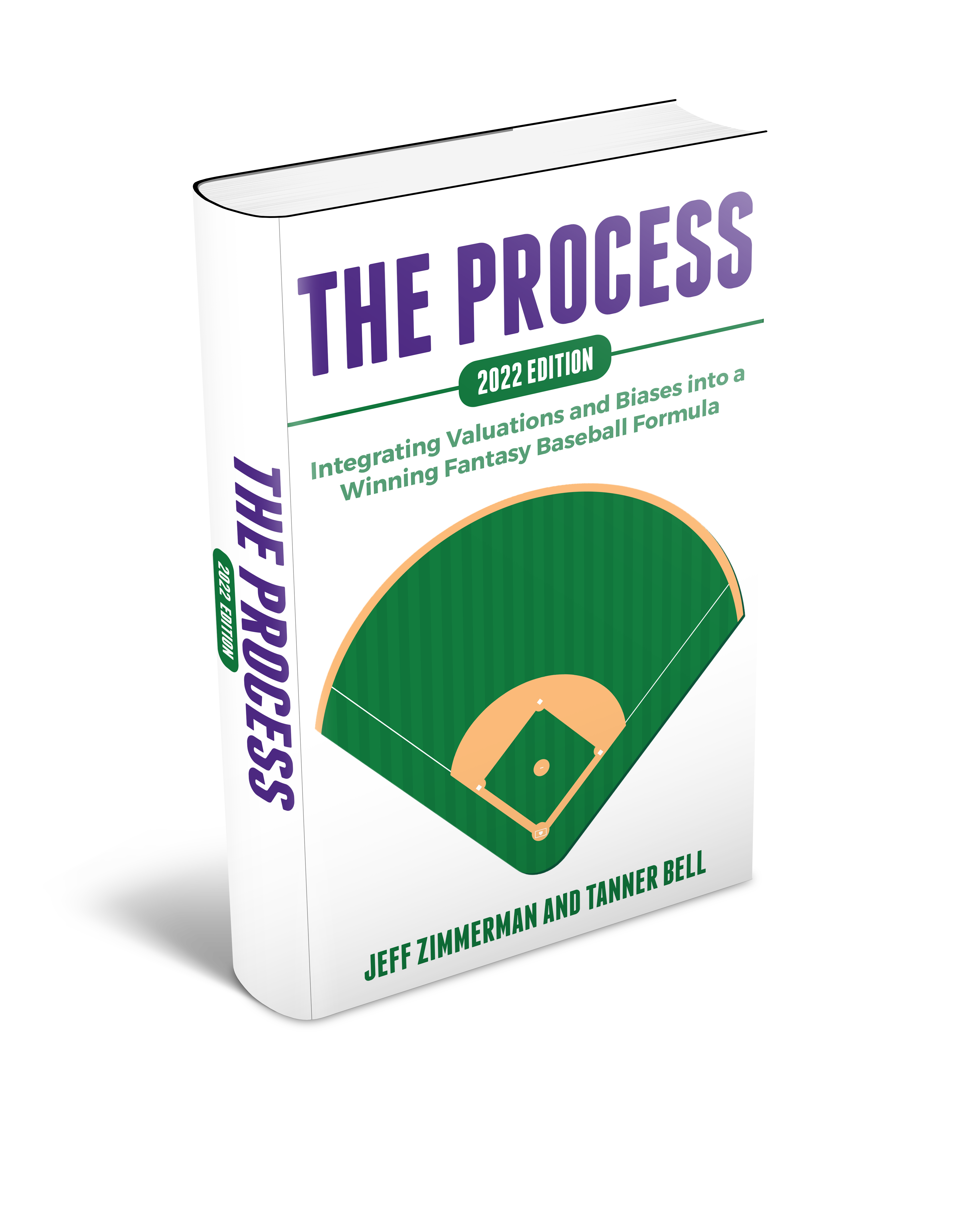 |
The Process – Integrating Valuations and Biases into a Winning Fantasy Baseball Formula, by Jeff Zimmerman and Tanner Bell
I partnered with Jeff Zimmerman (Fangraphs, Rotowire, Fantrax, multiple-time Tout Wars Champ) to write this comprehensive 300+ page book that outlines the start-to-finish process we go through during a fantasy baseball season. It’s available in a PDF e-book for $17.99 or paperback on Amazon for $22.99. The book delves into how to use projections, how and where it makes sense to tweak projections, how to properly use dollar valuations, explains how to use the three main valuation systems, gives draft preparation tips, explores draft strategy, and includes a ground-breaking study about in-season management. Check out these writeups if you’d like to read more about the book:
Here are writeups of the original 2019 version:
|
| Using Standings Gain Points to Rank and Value Fantasy Baseball Players, by Tanner Bell
So I wrote this guide to fill that void. The book is 150+ pages with over 200 screenshots of Microsoft Excel. It contains exact formulas and even links to download real example Excel files. Not sure if it’s for you? It’s rated 5 out of 5 stars in Amazon’s review system. Still not sure? You can see the first few parts of the book here for free. It’s not for everyone. I do recommend you have some experience working with spreadsheets, that you are using Microsoft Excel 2007 or greater, and that you’re using a Windows computer. |
|
| How to Rank and Value Fantasy Baseball Players for Points Leagues, by Tanner Bell
This is my instructional guide written specifically for those playing in points leagues (whether head-to-head or season long) and looking to create customized player rankings and calculate custom dollar values. There’s a similar story here to the SGP book above. I wrote this because no detailed set of instructions on how to do this exists (that I can find at least). You surely can find some high level instructions that tell you to “Take each player’s projected statistics and multiply by the scoring format for you league.” But that falls short, in my opinion. I’ve managed to turn that one sentence into a 160 page book! The book is loaded with Excel formulas, screenshots, and even links to download real example Excel files for you to refer to. Not sure if it’s for you? You can see the first few parts of the book here for free. Just like the SGP book, it’s not for everyone. But if you’re reading this blurb, there’s a good chance it might be for you. I do recommend you have some experience working with spreadsheets, that you are using Microsoft Excel 2007 or greater, and that you’re using a Windows computer. |
|
| Winning Fantasy Baseball: Secret Strategies of a Nine-Time National Champion, by Larry Schechter
I have not read every book written about fantasy baseball, but I have a hard time believing a better one exists. Schechter is likely the winningest expert league player of all time and he goes into great detail about his strategies and beliefs in this book. He covers nearly every topic you can think of. I may reread this book every year, it’s that good and full of ideas. You won’t be able to realistically apply all of his strategies in one season, so it’s something I plan on referring back to each season. He has very unique ideas about auction and draft strategy that I’ve never heard before. Schechter is a standings gain point proponent, like myself. He gives examples of how he projects player statistics, calculates dollar values, and develops his draft plan. He discusses trading, roster decisions, AL and NL only leagues, keeper and dynasty strategy, and more. |
|
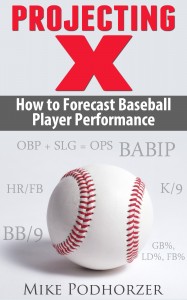 |
Projecting X – How To Forecast Baseball Player Performance, by Mike Podhorzer
That link above leads to my very detailed look at Mike Podhorzer’s “Projecting X”. I read the book when I was looking to begin making my own projections. Podhorzer uses an approach that sits nicely between the purely analytical and purely “feel” approaches to projecting player performance. He goes into great detail about exactly what statistics from the past he looks at for each player, the formulas he uses to calculate the current season’s projections, and also gives instructions on how to do all of this in Microsoft Excel. I really enjoyed the process of doing projections this way. I’m surely not more accurate than Steamer or PECOTA projections, but it’s a very educational process and I think it also helps immensely during the season to have this understanding of how a projection gets built. It helps to validate or dismiss a player’s performance in the season. The process of projecting players individually can be very time consuming. As I was going through Podhorzer’s process, I developed an Excel tool and wrote a short book of tips to make the process faster. He liked my developments so much he decided to make them available in a bundle. You can read more about his book, the Excel tool, and the short book of tips here. |
| Baseball Hacks: Tips & Tools for Analyzing and Winning with Statistics, by Joseph Adler I love combining technology (like Excel) and fantasy baseball. But the truth is that I’m a slow mover. I work full-time and only get a handful of hours each week to try teaching new concepts, strategies, and Excel tips. Adler has written a book that is LOADED with different technology hacks you can use to download all kinds of baseball data, build baseball databases, study data relationships, and more. The book is VERY technical. You don’t need a degree in programming, but you should have some basic computer programming skills (like maybe you’ve coded HTML before or took a class in Python). It’s an amazing resource. I only wish I had more time to play around with the tools and tips he gives. |
|
| The Book: Playing the Percentages in Baseball, by Tom Tango, Mitchel Lichtman, Andrew Dolphin, and Pete Palmer This book is a must for any sabermetrically inclined fantasy player. It has a lot of math. And it’s not relaxing Saturday afternoon reading. It is not even written with fantasy baseball in mind, but I think it strongly applies to many of the decisions we make. The book analyzes hot streaks, cold streaks, platoon advantages, and more. I think it’s very important to see the numbers behind this research so you can avoid biases that can hurt many fantasy players and help make more informed roster decisions. |
|
| How to Value Players for Rotisserie Baseball, by Art McGee
I believe this is one of the earliest pieces of work on how to calculate dollar values for fantasy baseball and is often referenced by others. Larry Schechter’s book (above) makes several references to McGee’s approach as an influence on his. If you’re a fan of the information I’ve put out on the topic of player valuation, you should read this too. Much of what I have come up with is based on McGee’s approach, I’ve just taken things and given more specific instructions and interpretations on how to accomplish these methodologies in Microsoft Excel. McGee also talks about how to apply the concept of player valuation for keeper leagues, which is a topic I have not yet gotten to. I don’t know how much longer the book will be available, but BaseballHQ is selling it for $8.95 plus S&H as an “Inventory Closeout”. |
Jump To a Specific Area: Books | Free Tools | Premium Tools | Podcasts
Free Tools
| Name | Description |
|---|---|
Razzball Player Pages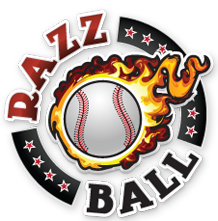
|
You simply will not find a better fantasy-centric player page on the web. I can’t think of a piece of information missing from these pages.
Whether you’re looking for Last 7 Days (if you are, you need to read “The Book” above), Last 30 Days, Season-long, Rest of Season Projections, Daily Projections, daily fantasy site prices, recent season statistics, monthly splits, game logs, player rater information, or projected dollar values, THEY HAVE IT ALL. Best of all, these pages are free to use. If you’re a frequent reader of SFBB, you might notice the Razzball player pages are based on Fangraphs IDs. Here’s a helpful post on how you can grab player IDs and interact with Razzball pages. |
Baseball Press’ “My Lineup Tool” |
Baseball Press is the site I turn to for up-to-date starting lineups and weather information. I first stumbled upon Baseball Press nearly two years ago and have been using the service ever since.
Baseball Press is the first to post and most accurate site on the web when it comes to posting each game’s starting lineup. This tool allows you to add your own players to get personalized information about your roster and who is starting, who is sitting, where they’re hitting in the batting order (which is important!), and what the weather is in the area (if you want instructions on how to register and use the tool, see my article here). |
| ADP Report from FantasyPros |
There’s not a better source of ADP out there. As draft season moves along, the folks at FantasyPros have up to six different sources of ADP information and they allow you to pick and choose the sources you want included in an average ADP calculation.
You can choose from popular sites like ESPN, Yahoo!, and CBS, or even competitive premium league sites like the NFBC or RTSports. You can look these up individually or just use FantasyPros! I have even written a detailed set of instructions on how to automatically pull this updated data into your own draft spreadsheet. |
Steamer Projections |
There are several other freely available projection systems, but I’m partial to Steamer. I could be wrong, but I don’t think anyone has been offering such a quality set of projections in an easily downloadable package for as long as Steamer has been.
You don’t have to take my word for it. The folks at Fangraphs and Razzball essentially base much of their content and information off Steamer projections (my understanding is they do make some tweaks to playing time, handedness adjustments, etc.). You can visit Steamer’s website here, download previous years’ projections here, download Fangraphs’ adjusted version of Steamer here or download Razzball’s adjusted version here. |
| Fast, On-Demand Mock Draft Simulations at FantasyPros |
Nothing beats the experience of a draft with real people, but sitting around around waiting for a mock draft to start only to find that half the people are screwing around or only wanted to test out the first few rounds is frustrating and a waste of your time.
FantasyPros has attempted to give you a much faster mock draft experience by allowing you to draft against simulated opponents. You can start a draft whenever you want and complete it in a matter of minutes. This is a great way to test out different strategies and see what a team might look like if you do take Kershaw in the first round. MOCK DRAFT SIMULATOR
The easiest way to prepare for your draft.
 Fast. No waiting for opponents to pick. Fast. No waiting for opponents to pick. Fun. Draft against the top fantasy experts. Fun. Draft against the top fantasy experts. Free. You don’t even have to register. Free. You don’t even have to register.
Fantasy Baseball Mock Drafts powered by FantasyPros
|
Razzball Trade Analyzer
|
This is a very fun tool to play around with. It’s especially useful if you play in a common 12- or 15-team league roto format. The tool lets you quickly load up players on both sides of the trade and provides rest of season values based on Razzball’s projections (that they partner on with Steamer).
This is great if you don’t have the time to create and maintain your own valuations during the season and need a quick way to evaluate the reasonableness of a trade. |
Jump To a Specific Area: Books | Free Tools | Premium Tools | Podcasts
Premium Tools
| Name | Description |
|---|---|
The Automated SGP Ranking Excel Tool
|
The Automated SGP Ranking Tool will help you convert your favorite projection set (Fangraphs, Steamer, RotoWire, PECOTA, etc.) into rankings and dollar values tailored to your own league’s settings. The process takes only minutes. No messy Excel formulas. Just load your projections into the file. Adjust a few settings and standings gain points rankings are calculated automatically. Click here to read more about the tool. |
The Smart Fantasy Baseball Projection Aggregator
|
Just like I’ve created instructions on how to create your own customized rankings, a large goal of mine was to show people how to average multiple sets of projections in to one. I came to realize that showing others how to do this would be ineffective. The formulas and strategies for required to bring different projection sets into one are too complex for most.
Instead, I created an easy-to-use Excel file that requires a simple setup that should provide you averaged projections in a matter of minutes. You download and provide the projection systems of choice, adjust a few settings, and the Projection Aggregator will interpret the projections you’ve added and calculate averages automatically. No VLOOKUPS, no matching up players. Click here to read more about the Projection Aggregator and to see detailed screenshots of all its features. |
Podcasts
I am a huge proponent of podcasts. I work 50 hours a week, have two young daughters, and try run this site on the side. That severely limits my ability to read up on a lot of fantasy news and strategies. I also have a 70-mile round trip commute to work each day. While that sounds like an awful thing, it does provide an opportunity to digest a lot of fantasy baseball information in the car while driving. Because I”m a huge nerd, I even listen to podcasts on double speed so I can listen 2 hours of audio in just 1 hour…
| Podcast | Description |
|---|---|
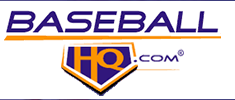
|
Baseball HQ Radio iTunes | RSS Feed | Podcast Site Hands down, this is my favorite podcast. One of the great things about it is the structured and consistent format. Each week the show has segments about the AL, NL, minor league prospects, a talk with an industry expert on who they like and dislike, as well as my favorite part, the “Talk with Todd”. In this segment host Patrick Davitt spends 20-30 minutes focusing on my favorite topics of fantasy baseball: strategy and player valuation. Even though most of the shows won’t be applicable to current events, I would recommend going back and just listening to the “Talk with Todd” segments of past shows if you’re interested in elevating your knowledge of the game. I’m such a nerd. I just told you to go listen to outdated podcasts. And I’m serious! |
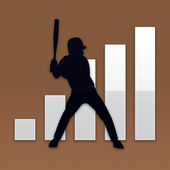 |
Fangraphs Fantasy Baseball iTunes | RSS Feed | Podcast Site Hosted by Paul Sporer and Justin Mason, these two don’t often get into my favorite topic of player valuation, but they are among my favorites at analyzing player performance. If you follow my site closely, you realize I’m a bit of a slave to the projection systems. And given the way they work, the projection systems are going to be slow at recognizing changes in players. They don’t know about the jump in fastball velocity, the new pitch a guy is throwing, or the new approach at the plate a hitter has. This is where Justin and Paul excel. Paul, especially as it relates to pitching. My strategy is to trust in hitters, invest heavily in solid bats, and try to uncover pitching breakouts late in the draft and during the season. And these two guys are extremely helpful at helping me pull that off and being early to identify the pitchers that are breaking out. |
 |
Flags Fly Forever (by Baseball Prospectus) iTunes Hosted by Brett Sayre and Mike Gianella, these guys bring a nice mix of fantasy specialties to the table. Specifically, Mike Gianella is heavily into player dollar values and discusses the topic frequently. Brett Sayre specializes in dynasty and prospect information, which has proven helpful for me as that is not a major focus of my time. I love the time they devote to dollar value talk. This is heavily concentrated in the off-season podcasts, so tune in there if you find it interesting like me. |
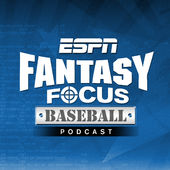 |
ESPN Fantasy Focus Baseball iTunes | RSS Feed | Podcast Site After being hosted by Nate Ravitz and Matthew Berry for many years, this podcast has taken a step away from hilarity and hi-jinks and toward a more serious and analytical slant with Eric Karabell and Tristan H. Cockcroft. I’d say there is still a focus on entertainment here, nothing from ESPN is going to be completely nerdy fantasy talk, but Cockcroft (multiple time Tout Wars and LABR champion) does a great job of sprinkling in very analytical snippets. Don’t shy away just because this is from ESPN. Another really valuable feature of the show is Stephania Bell, who makes a weekly appearance during the season. I’d argue that you should listen to that segment each week, even if you don’t listen to any other episodes. I think she’s excellent at breaking down injuries, expected timetables for return, and what it can mean to future performance. The information she provides is invaluable if you’re trying to decide what to do with or about an injured player. |
Want More?
Register as an SFBB Insider and get a free guide of 20+ of the best tools, websites, podcasts, and advanced data you need to become a smart fantasy baseball player.

